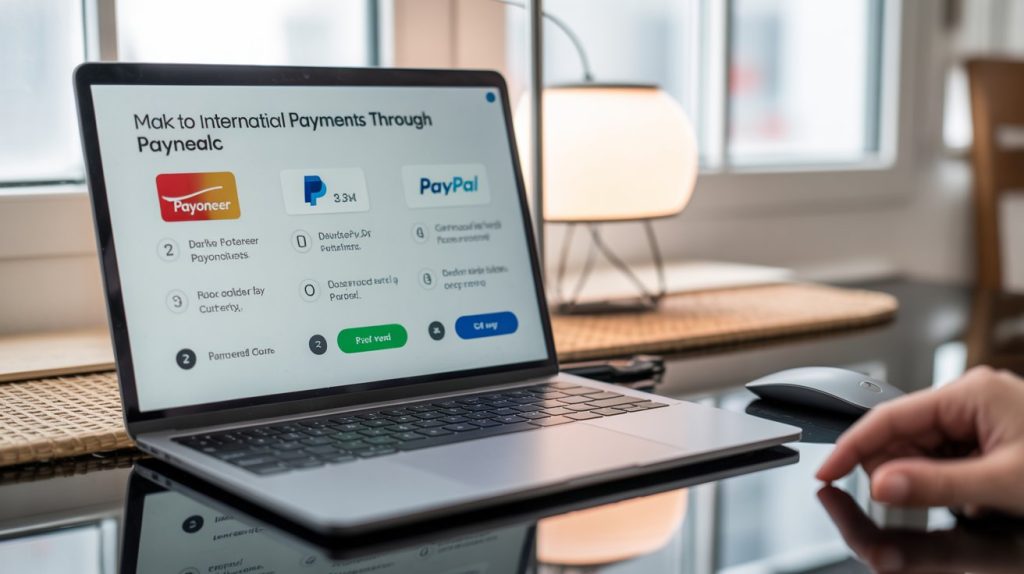How to Make Payments from Payoneer or PayPal – Step-by-Step Guide
In today’s global economy, international payments are essential for freelancers, businesses, and even individuals sending money abroad. Among the most popular platforms are Payoneer and PayPal, each offering convenient solutions for transferring funds. In 2025, both services continue to evolve with better security, lower fees in some regions, and easier mobile experiences.
This guide explains, step by step, how to set up accounts, verify identity, link bank details, and make payments smoothly using either Payoneer or PayPal. Whether you are paying for services, sending money to family, or receiving income as a freelancer, this article covers everything you need in plain, human-friendly language.
Why Use Payoneer or PayPal in 2025?
- Trusted globally for cross-border transactions.
- Widely accepted by freelancers, marketplaces, and online businesses.
- Faster than traditional bank wires in many cases.
- Easy to track payments and manage currency conversions.
- Secure platforms with strong fraud detection systems.
Setting Up Your Account
1. Creating a Payoneer Account
- Visit the official Payoneer site or mobile app.
- Click on “Sign Up” and provide details such as name, email, and country.
- Submit identity proof like passport, driving license, or national ID.
- Wait for approval, usually within 1–2 business days.
2. Creating a PayPal Account
- Go to the official PayPal site or app.
- Choose between “Personal” or “Business” account types.
- Enter your email address and create a secure password.
- Provide identity details and link a phone number for verification.
Verifying Your Identity
Verification is essential to unlock higher limits and build trust with the platforms. In both Payoneer and PayPal, you may need to upload:
- Government-issued ID (passport, Aadhaar, or driver’s license).
- Proof of address (utility bill, bank statement).
- Bank account details for payouts and transfers.
Linking Bank Accounts and Cards
Payoneer Linking
Payoneer allows users to connect local bank accounts for withdrawals and funding. Once linked, you can transfer earnings directly or use the Payoneer MasterCard for payments.
PayPal Linking
PayPal users can add debit/credit cards and bank accounts. Linking helps you make instant payments and withdraw balances into your local bank.
Making Payments – Step by Step
Payoneer Payments
- Log in to your account on web or app.
- Select “Pay” from the dashboard.
- Enter recipient’s email or bank details linked with Payoneer.
- Choose the payment method (balance, bank, or card).
- Confirm details and authorize the transfer.
PayPal Payments
- Sign in to your PayPal account.
- Click “Send & Request.”
- Enter recipient’s email or phone number.
- Select amount and currency.
- Confirm and submit payment.
Fees and Conversion Charges
| Feature | Payoneer (2025) | PayPal (2025) |
|---|---|---|
| Account Opening | Free | Free |
| Transfer to Local Bank | Usually 2% above market rate | 2.5% – 3% conversion fee |
| Card Payments | Available with Payoneer MasterCard | Linked debit/credit card usage |
| Global Acceptance | Freelance platforms, direct clients | eCommerce, subscriptions, personal transfers |
Security Tips for Safe Transactions
- Always enable two-factor authentication (2FA).
- Avoid logging in from public Wi-Fi networks.
- Regularly update passwords and avoid reusing them.
- Check transaction details carefully before confirming.
- Be cautious of phishing emails pretending to be Payoneer or PayPal.
Troubleshooting Common Issues
1. Payment Delays
Occasionally, transactions may take longer due to compliance checks. Wait 1–3 business days before raising concerns.
2. Account Restrictions
Both platforms may limit accounts if suspicious activity is detected. Provide requested documents promptly to restore access.
3. Currency Conversion Losses
To reduce conversion losses, consider holding balances in multiple currencies within the wallet if available.
Best Practices for Freelancers and Businesses
- Keep clear records of all transactions for tax reporting.
- Use business accounts if you handle multiple client payments.
- Send invoices through platform tools for transparency.
- Monitor fees regularly to optimize transfers.
Conclusion
Payoneer and PayPal remain powerful tools for international payments in 2025. By setting up accounts properly, verifying identity, and following security best practices, you can ensure smooth transactions across borders. Each platform has its strengths: Payoneer excels with freelancer payments and bank transfers, while PayPal offers convenience for personal and online shopping transactions. The choice depends on your needs, but with the right approach, you can manage global payments confidently and legally.
Related Posts
- • Crypto Investment Tips
- • Visa Holders Financial Planning
- • Travel Insurance for Students
- • Make Payment with PayPal
- • Loan & Credit Guide
- • How to Save Tax Legally
- • Student Loans 2025
- • How to Apply for Student Loan
- • How to File Tax in USA
- • Emergency Fund & Insurance Planning
- • Cryptocurrency Regulations 2025
- • Top Investment Options
- • Credit Card Score Explained
- • How to Build Credit History
- • International Banks for Students
- • How to Apply for Credit Card

